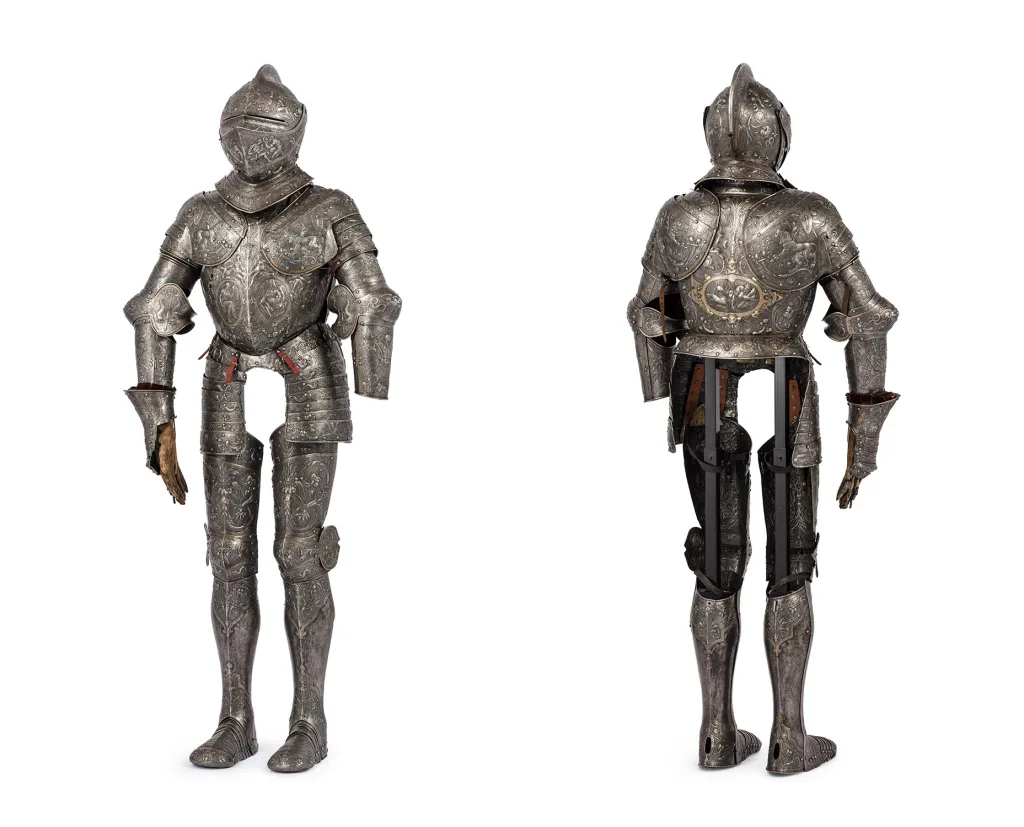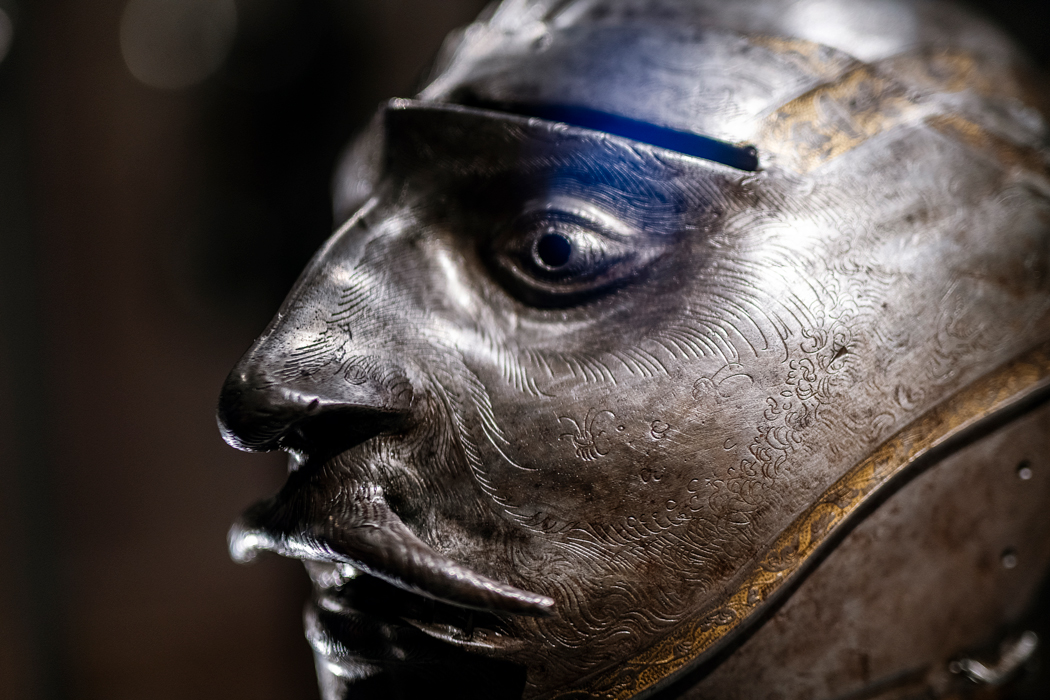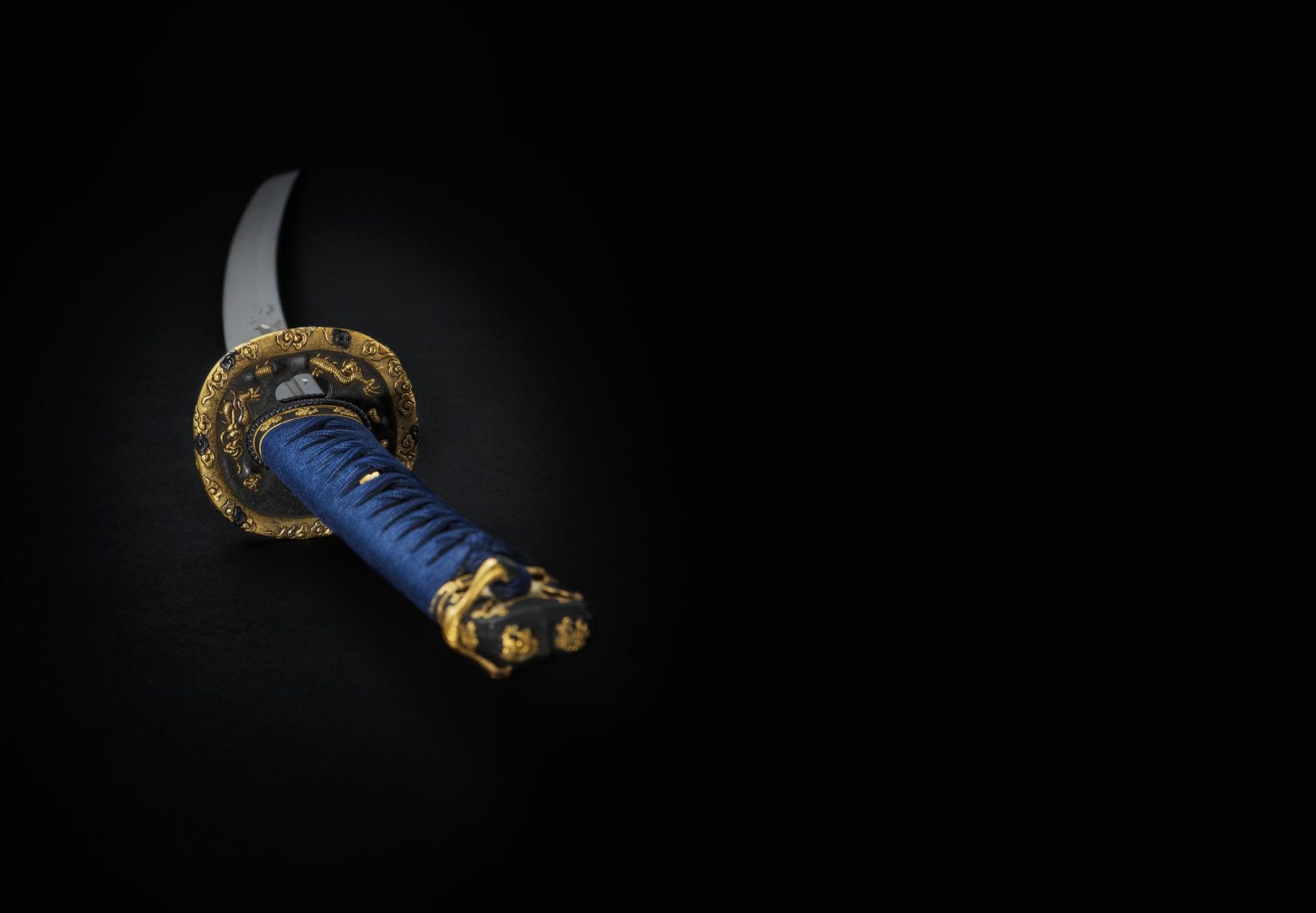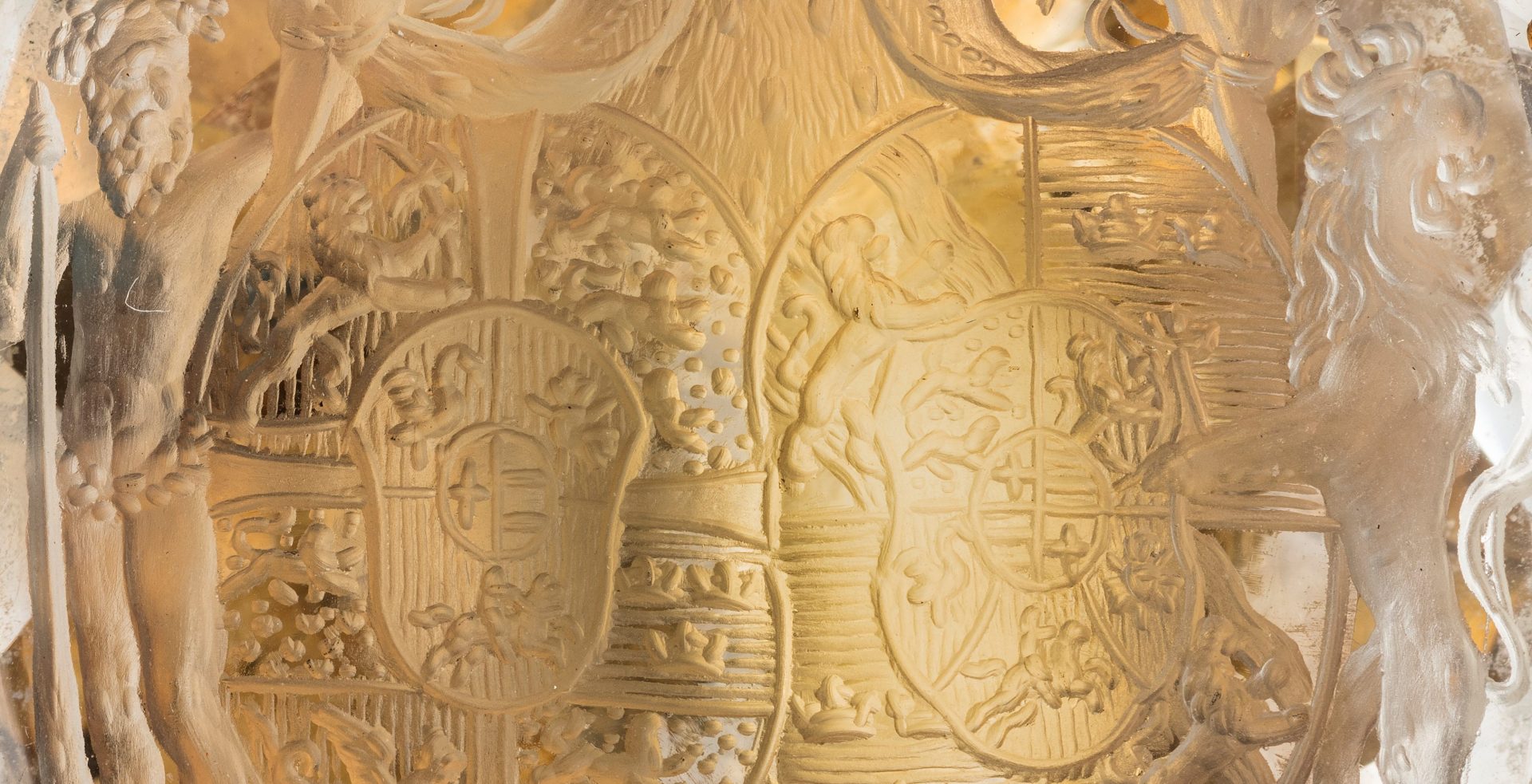Erik XIV's Suit of Armour
An insight into one of the Royal Armoury’s more exclusive artefacts
King Eric XIV rode into Stockholm in 1564 after a successful war against Denmark. The triumphal procession of soldiers, spoils of war and prisoners of war was lined with woven wallpaper, fireworks and crowds of people. And there was much else besides, both shooting and other things, which do not have to be repeated and described here now, as the historian Erik Jöransson Tegel would write later.
In the triumphal procession, the King rode an armoured horse, clad in a richly ornate armour. The armour was not intended primarily for combat, but was made to impress.
Several craftsmen had worked together to manufacture the armour. A cuirass maker in Arboga forged it. The decorations were produced in Antwerp. An artist drew the pattern and the goldsmith Eliseus Libaerts carved the reliefs, created patterns and inlaid gold ornaments.
You can take a closer look at the different parts here.



